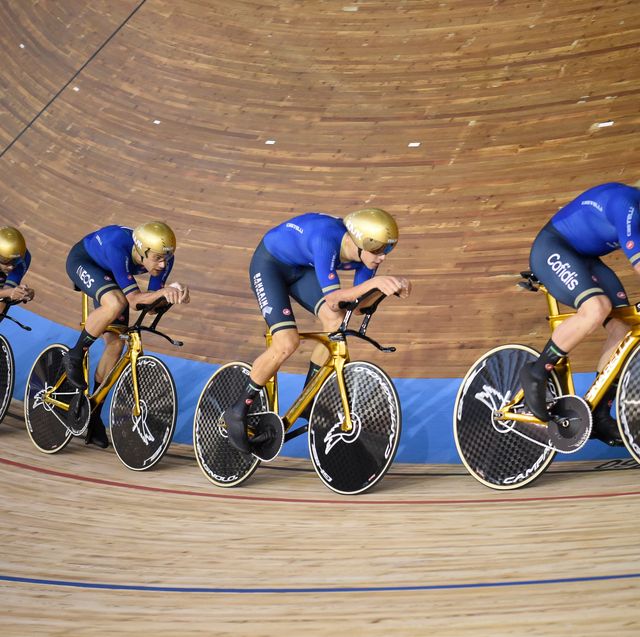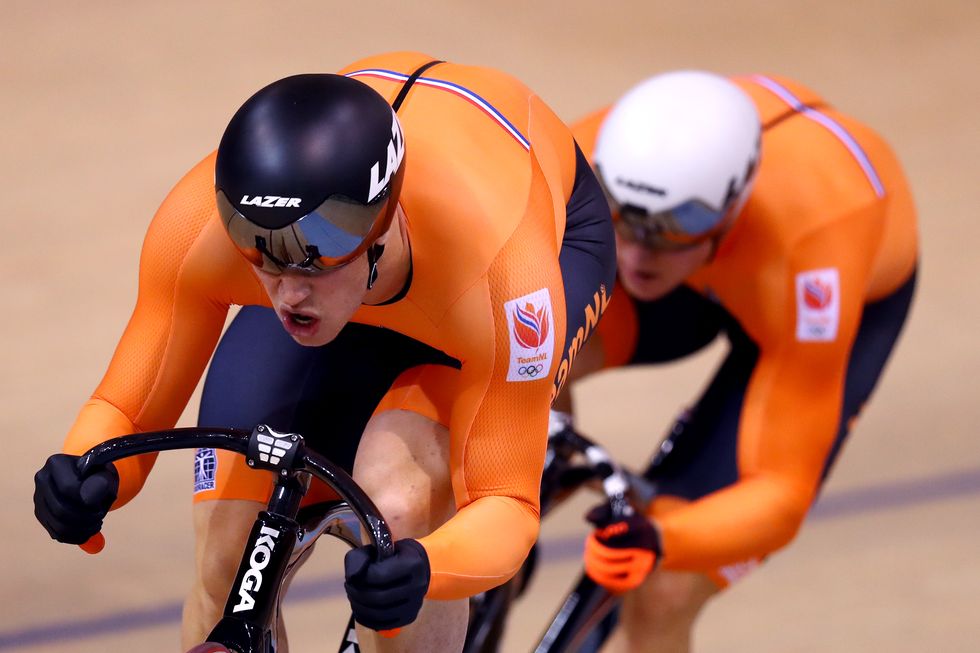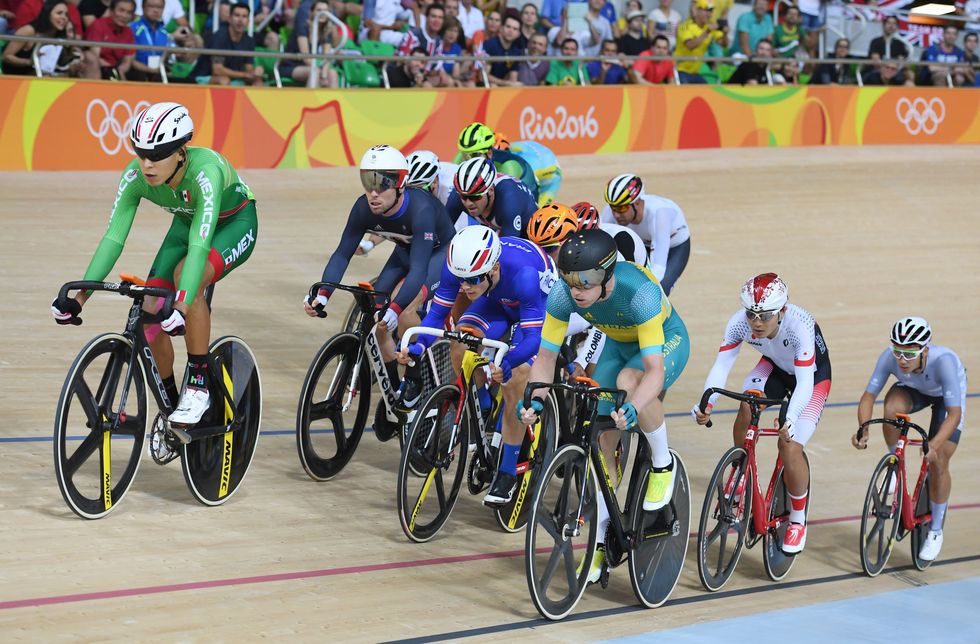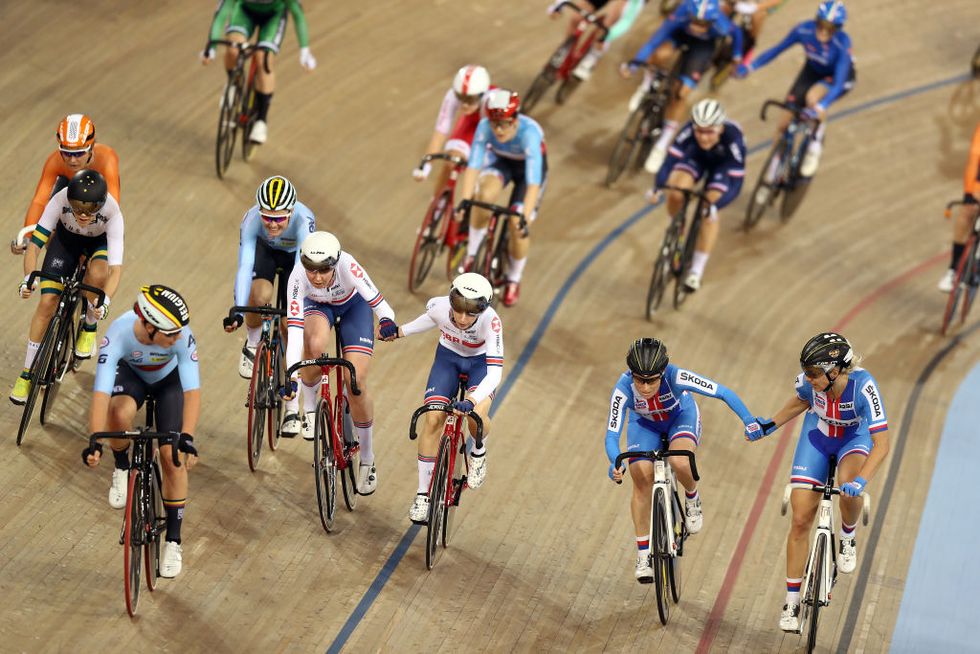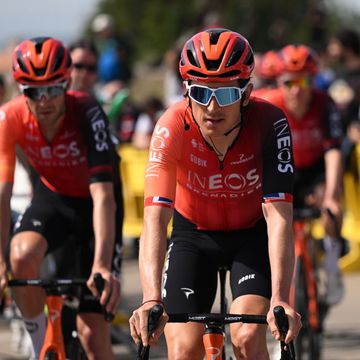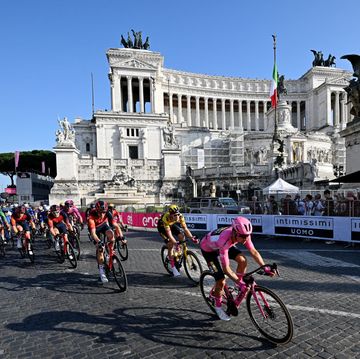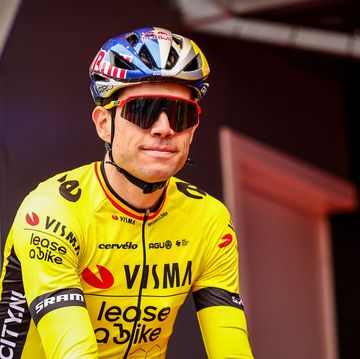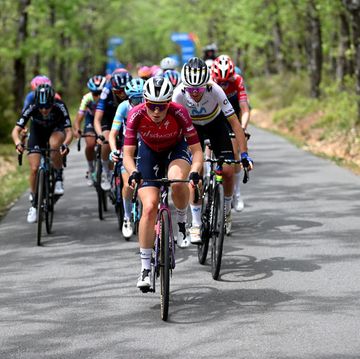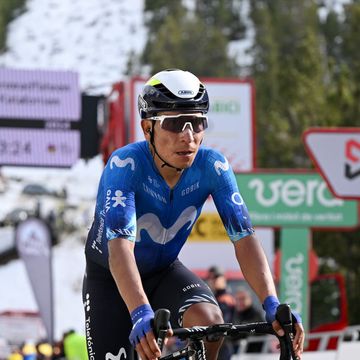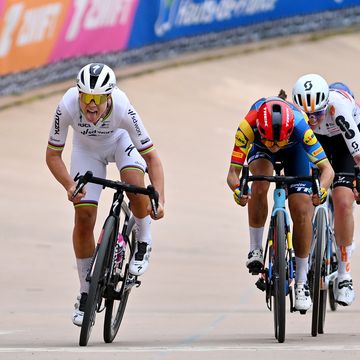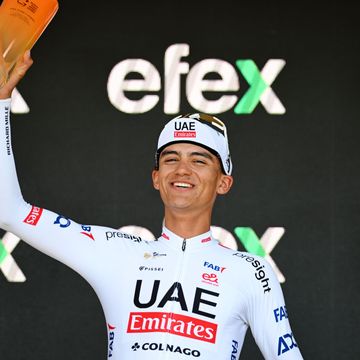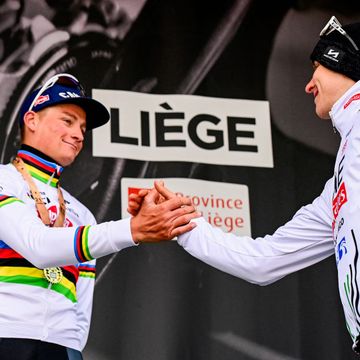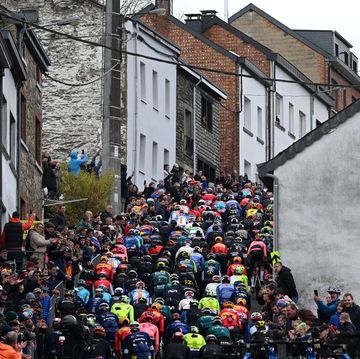With the 2022 UCI Track World Championships starting this Wednesday in Montigny-le-Bretonneux, France, and the 2024 Paris Olympics creeping up in the timeline, it’s time we did like a derny and brought you up to speed with the ins and out of track cycling.
While it can literally be described as riding around in circles, this discipline involves the most strategy, some quick math calculations (yes, math,) and a combination of power, the right gearing, and the smoothes of pedal strokes to reach top speed and beat your rivals
Here, we provide some history of track cycling and a brief explanation of the bikes that are ridden. Then we break down the rules of each track cycling event that you’ll see at the 2022 UCI Track Cycling World Championships in the Saint-Quentin-en-Yvelines Velodrome.
→ Sign up for Bicycling All Access for the latest cycling news, fitness tips, and gear reviews 🚲
History of track cycling
Track cycling is one of the oldest Olympic disciplines, making an appearance at the very first Games in Athens in 1896. There are 12 different events, and the races are held in a bowl-shaped arena, called a velodrome, that is 250 meters (820 feet) round (though sizes can vary from track to track), with racers riding counterclockwise and achieving top speeds above 70km per hour (43.5 mph). Olympic velodromes—like the Izu Velodrome we saw at the 2021 Olympic Games—are constructed out of wood (usually Siberian Pine) and must bank at around 45 degrees, per UCI guidelines.
The Track Cycling World Championships were first held in 1893, in Chicago, where the crowds saw just three events take place. Today, we see about 22 events spread out over five days of racing. Historically, France has held the most editions of the event (15) and has won the most gold medals of all time (145). This year, France comes back as a host just outside of Paris in the Saint-Quentin-en-Yvelines Velodrome.
The Saint-Quentin-en-Yvelines Velodrome
The Vélodrome National de Saint-Quentin-en-Yvelines was inaugurated in 2014 and is located in Montigny-le-Bretonneux, France. This 250-meter track, made of Siberian wood, also serves as a multi-use facility, with a covered BMX stadium, the headquarters of the French Cycling Federation, and accommodations for the French national teams.
The track was designed by architect Ralph Schürmann and “was specially developed to become one of the fastest in the world, enabling cyclists to reach 85 kph safely (constant radius of 23 m, maximum angle of 43.8°, minimum angle of 13°),” according to the velodrome’s website.
The venue—which was built for France’s 2012 bid on the Olympic Games—can host up to 5,000 people and will be hosting, not only the 2022 Track World Championships, but also the 2024 Olympic track cycling and para-cycling events in 2024.
What kind of bikes do you ride in track cycling?
Track bikes are bicycles optimized for racing at a velodrome or an outdoor track. Unlike road bikes, the track bike is a fixed-gear with a single-gear ratio, and without a freewheel or brakes. They are meant to be ridden over smooth tracks, their tires are narrow and inflated to high pressure reducing rolling resistance. Additionally, the bikes must comply with UCI Equipment Regulations.
What are the track cycling events?
There are six track events at the Olympics, and they can be categorized as either endurance or sprint.
Sprint events:
➥ Sprint
➥ Team sprint
➥ Keirin
Endurance events:
➥ Team pursuit
➥ Omnium
➥ Madison
Every discipline uses a different combination of teamwork, technique, speed, and strategy.
Sprint
The sprint, aka match sprint, is perhaps the most dramatic and combative track event. Two individual riders race each other in this classic short-distance race covering three laps of the track.
The qualifying phase consists of a 200m time trial with a flying start to determine the seeding of the 24 riders, fastest versus slowest. In a flying start, riders do a “free” lap around the track so they can get on top of their gearing. On the second lap around, the timer starts once they hit the 200m line, where they go full gas to the finish line in an attempt to record the fastest qualifying time. Starting in the quarterfinals, the riders race best of three heats.
In this event, psychology tactics are applied before the race even starts; at the start line, opposing riders stare each other down through their mirror-finish lenses. Other tactics are also employed during the race to avoid taking the lead and bearing air resistance. Sometimes a rider will do a track stand, which means coming to a complete standstill in the middle of the race, in an attempt to force their rival to come forward. However, the final lap is always an all-out sprint for the line.
Team Sprint
In the team sprint, two teams—two cyclists for the women and three for the men—each race three laps around the track. After every lap, the lead rider peels away and moves to the back of the paceline, allowing the next rider to face the air resistance. The race is a test of a team’s speed and coordination, and the winner is decided by the finishing time of the team’s last rider. In the case of a tie (to the closest one-thousandth of a second), the team with the fastest time over the final lap is declared the winner.
Keirin
In the keirin, up to seven riders compete in a six-lap race. A motorized device or “derny” paces the riders for the first three laps, gradually increasing in speed as the cyclists maneuver for position and get on top of their heavy gears. The pacer accelerates to 50km/h (31mi/h,) and at three laps remaining, it pulls away to allow the riders to sprint in a wild dash for the finish. It is not unusual to see some elbow-rubbing, shoulder bumping, and even high-speed crashes in this event.
The keirin was developed in Japan around 1948 for gambling purposes, and it became an official event at the 2000 Olympics in Sydney, Australia.
Team Pursuit
The team pursuit is a 4km race between two teams of four riders, who race to overtake the other team or beat their time. Each team starts out at opposite sides of the track, and, like in the team sprint, the riders take turns riding at the front. When the rider switches out, they swing right and up to slow down and get back into the rotation. It is fascinating teamwork to watch, and one of the most beautiful and collaborative displays of speed you will see.
Omnium
The omnium is comprised of four bunch events: the scratch race, the tempo race, the elimination, and the points race. Riders race all events on the same day and are awarded points for their finishing position in each event.
After the first three events, the riders’ accumulated points are added up. During the fourth and final race, this total may increase or decrease according to the points won or lost by the rider in the points race. The winner is the rider with the highest total of points at the end of the points race.
Scratch race: The most straightforward format—all the riders start together and race to be the first over the finish line. The distance is 10km for men and 7.5km for women.
Tempo race: The riders race for 10km (for men) or 7.5km (for women), and the first rider across the line in each lap after the first four laps is awarded a point. Riders can also earn 20 points by lapping the field. The winner is the rider with the most points.
Elimination race: Also known as “Devil Take the Hindmost,” the last rider in the bunch is eliminated after every second lap, decided by the last rider’s rear wheel crossing the line. Riders wear transponders on their head tubes that light up if they are eliminated and signal that they must exit the track.
Points race: The riders race for 30km (men) or 20km (women), and are awarded points along the way. The first four finishers in these sprints are awarded 5, 3, 2, and 1 points, respectively. If a rider laps the field, they are awarded 20 points; and in the last lap, points are double, which can be a deciding factor for the podium. Any rider that loses a lap on the field has 20 points deducted from their total. This event involves the most strategy and math skills from the riders, as they have to be ultra-aware of which moves to follow, which to let go, and how many points they need to improve their overall placing.
Madison
In the madison, each team sends two riders to race in a 50km (men) or 30km (women) endurance relay. While one team member races, the other slows down to rest before being thrown back into the action with a hand sling from their teammate.
The winner is calculated according to the number of points won. As in the points race, any team that gains a lap on the main bunch is awarded 20 points, while any team that is lapped by the bunch has 20 points deducted. Points awarded in the last sprint after the full distance are doubled (10 points, 6 points, 4 points, 2 points).
The madison was an Olympic event for men in 2000, 2004, and 2008 but was dropped ahead of the 2012 London Olympics, partly for reasons of equality as there was no equivalent race for women at the time. Finally, in Tokyo, both men and women will participate in the madison.
How to Watch the UCI Track Cycling World Championships
This year, you can catch all the action each day at FloBikes from October 12-16.
